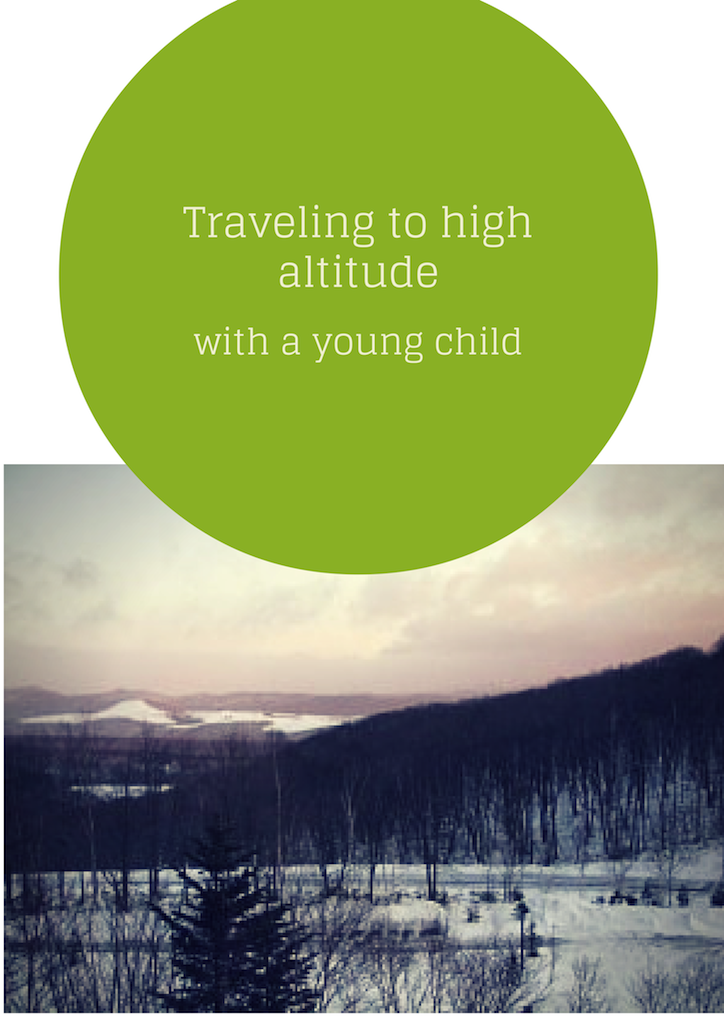The Northern Hemisphere ski season is here and with it an increasing number of families are traveling to high altitude. Many parents are unaware that families visiting mainstream ski destinations such as the Canadian Rockies are at risk of altitude sickness.
At high altitude the pressure of oxygen in the atmosphere is significantly less than at sea-level. As a result our lungs may not retrieve enough oxygen from the air resulting in hypoxia. A result of this hypoxia can be altitude sickness. People are more likely to get altitude sickness the higher they are, the quicker they have traveled to high altitude and the length of time they stay at high altitude. Children and babies are equally as likely as adults to become unwell due to the effects of altitude.
The most important aspect of preventing and managing altitude sickness is recognizing that you and your child are at risk. Specifically there is a risk of travellers becoming unwell with altitude sickness at elevations above 2500 meters (8200 feet). You and your child are at particlar at risk if you fly directly into airports above 2750 meters (9022 feet) eg Cuzco in Peru, La Paz in Bolivia, and Lhasa in Tibet. You are also at particular risk if you drive or hike above 2750 meters (9022 feet) rapidly.
Preventing altitude sickness
- Ideally travel to a high altitude should occur of a few days. This allows the body to get used to (or acclimatise) to the higher altitude gradually, specifically over 3-5 days.
- Although it may be difficult with an active toddler, try to avoid your child exerting themselves physically for the first 48 hours at high altitude. Be ready with DVDs, books and puzzles.
- Assist your child to drink more fluids than usual since their body will be more prone than usual to dehydration.
- Recognise the early symptoms of altitude illness.
- There are some medications which your doctor may consider prescribing to prevent altitude sickness.
Recognising altitude sickness
There are three different types of altitude sickness:
- Acute mountain sickness
- High altidue cerebral oedema
- High altitude pulmonary oedema
Acute mountain sickness.
Acute mountain sickness is a common condition for those ascending above 2500 meters. Be alert for little ones not yet able to articulate their symptoms to present with loss of appetite, irritability, and pallor. Older children who can communicate how they are feeling may complain of headache, fatigue, loss of appetite and/or nausea. Children of any age may vomit. Symptoms will typically arise 2-12 hours after arrival and should resolve within 72 hours of acclimatization.
High altitude cerebral oedema.
A child who has acute mountain sickness which is deteriorating further and developing high altitude cerebral oedema may become lethargic, drowsy, confused, and unsteady on their feet.
High altitude pulmonary oedema
This rare but serious form of altitude sickness can occur in a child who hasn’t displayed any of the symptoms of acute mountain sickeness. Children will become increasingly short of breath and weak as well as have a cough.
Both high altitude cerebral oedema and high altitude pulmonary oedema may be rapidly fatal.
What to do if your child is experiencing symptoms of altitude sickness
If your child is experiencing symptoms of altitude sickness you should seek rapid medical attention. As the symptoms of acute mountain sickness are non-specific they may represent another illness such as meningitis. A medical opinion is therefore essential.
You should never ascend to a higher altitude when you or your child are experiencing symptoms of altitude illness. Descend to a lower altitude if you or your child’s symptoms become worse while resting at the same altitude. Stay at this lower altitude for a couple of days. If your child has acute mountain sickness regular paracetamol may help them feel better.
Rapid descent of at least 305 meters can be life saving for children who have high altitude cerebral oedema or high altitude pulmonary oedema. Doctors may prescribe medication and given oxygen to children with either of these life-threatening conditions.
Check out other useful travel tips at Suitcases and Sippy Cups and Walking on Travels Travel Tips Tuesday.
© Copyright 2012 Danielle, All rights Reserved. Written For: Bubs on the Move



This is just what I needed to read. We are preparing for a trip to Winter Park and Vail and need to be on the look out for altitude sickness. We will be spending about 36 hours in Denver before heading further up, so hopefully that will help.
It sounds like an amazing trip. Stay safe!
We just recently moved from sea level to 6000ft and although my husband and I experienced a little bit of altitude sickness, our kids did not. We made sure that they were drinking lots of water so that probably helped. We were thankful they didn’t have issues with it.
Sorry to hear that you and your husband suffered a bit Jen but glad the kids didn’t.